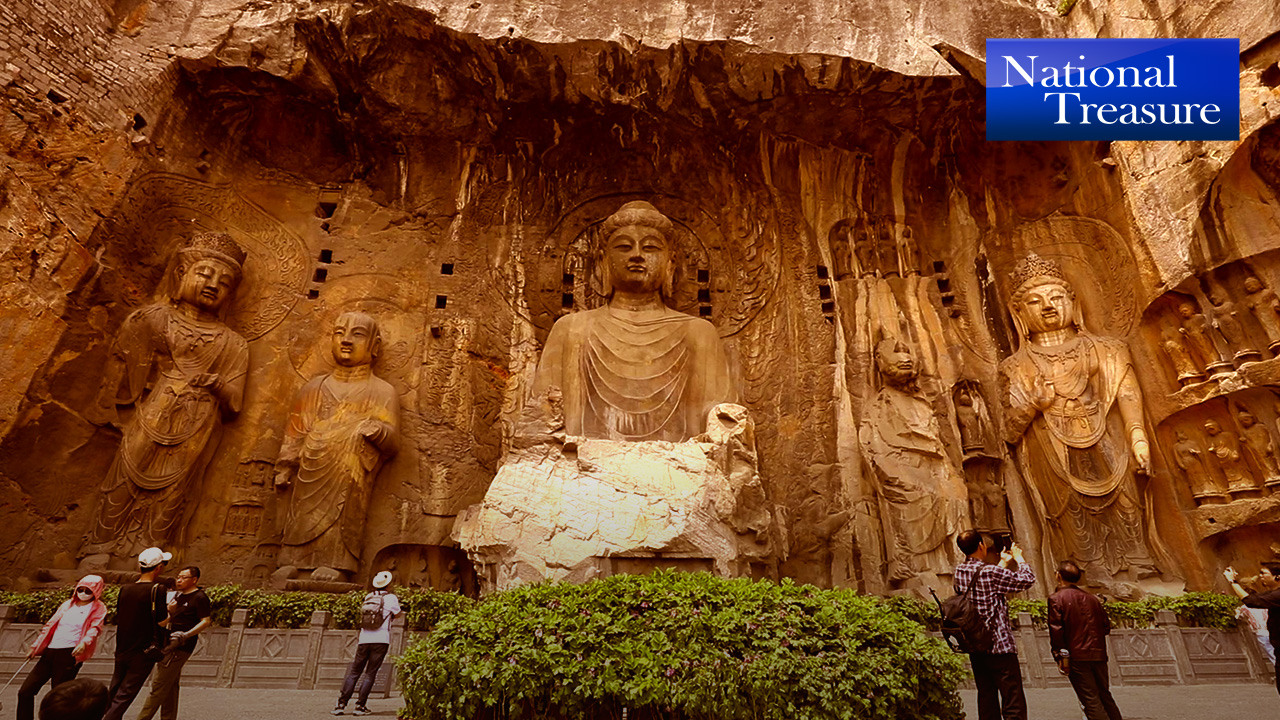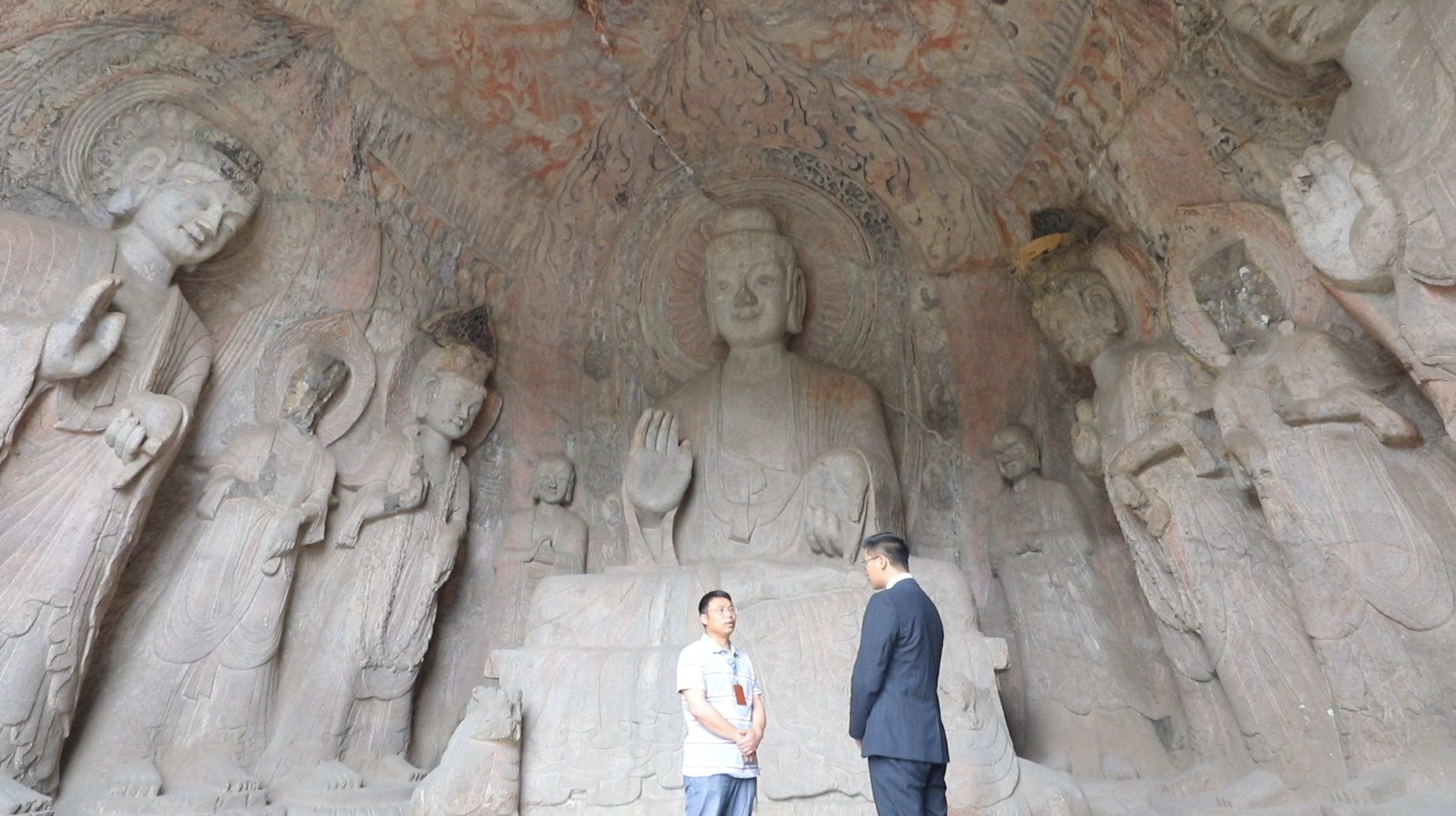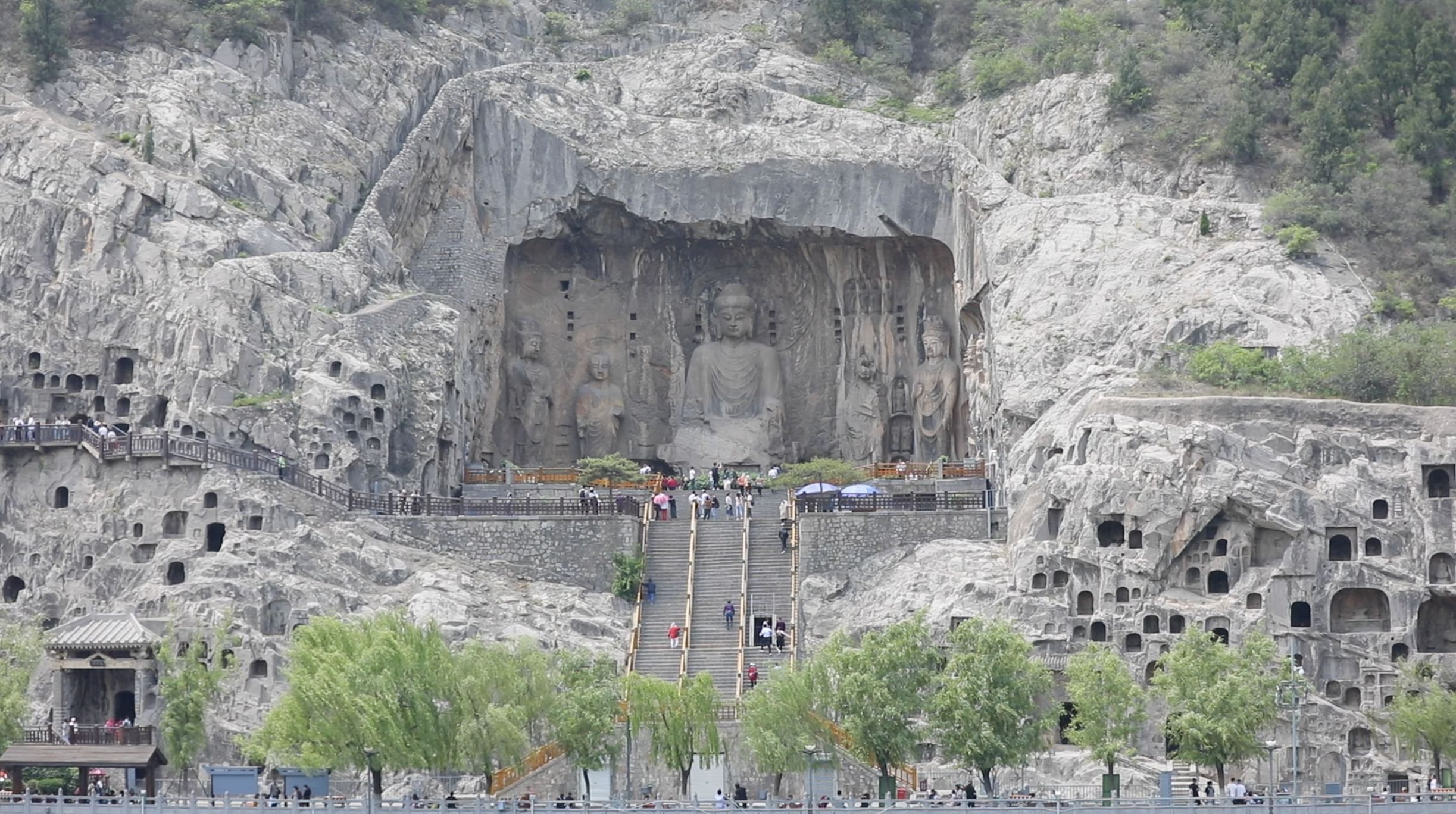
Culture China
18:36, 13-May-2019
Longmen Grottoes: A symbol of ancient cultural exchange in Asia
Updated
22:42, 13-May-2019
By Cui Hui'ao, You Siyuan
02:40

When Siddhartha Gautama ventured out of India centuries ago, each modern-day Asian country interpreted his Buddhist teachings differently. China was no exception. And to this day, the Longmen Grottoes in central China's Henan Province, feature tens of thousands of Buddha statues sculpted in caves.
For instance, the Giant Vairocana Buddha, the must-see of the site, which sits high in a cave.
The 17 meter-high statue was carved into the cliff centuries ago. Many say it resembles Emperor Wuzetian from the Tang Dynasty, sculpted with vigor and grace. Whether or not that's true, since Buddhism was introduced to China, it has incorporated many local elements.
Take this sculpture of Sakyamuni as an example. Its thin face, slim body and light robes represent a major shift from the so-called Gandhara style found in India.
Jiao Jianhui, deputy researcher of Longmen Grottoes Research Academy said, "Traditionally, Indian style Buddhas have plumpish faces, deep eyes, high noses, and wear heavy kasayas. But this Buddha here blended into Chinese aestheticism, specifically that from the literati in the Southern Dynasty."

Jiao Jianhui speaks to CGTN reporter Cui Hui'ao at the Longmen Grottoes. /CGTN Photo
Jiao Jianhui speaks to CGTN reporter Cui Hui'ao at the Longmen Grottoes. /CGTN Photo
Apart from Buddhas, the architecture style of these caves also evidences the localization of Indian Buddhist art, such as in the details of the ancient Chinese pagoda, and the wooden structure of the Chinese palace.
The Longmen Grottoes are considered some of the finest examples of Chinese Buddhist art. Some call them the encyclopedia of Chinese Buddhism. Although the cave was built in ancient times, the influence of the foreign culture can be found in the magnificent art.
The construction of the Longmen Grottoes began in the late 5th century during the reign of Emperor Xiaowen when the Wei Dynasty moved its capital from Datong (where they created the famous Yungang Grotto) to Luoyang. At this time, Chinese Buddhism was reaching its first peak, and the emperor was a pious believer.
Carving continued after the Wei Dynasty through the successive six dynasties, including Tang and Song, for a span of over 400 years and the Tang Dynasty witnessed the second peak of Buddhist belief.
After 1,500 years, Longmen Grottoes is still magnificent. Its rich content reflects from different aspects the development and changes in ancient China's politics, economy, religion and culture. UNESCO has also listed Longmen Grottoes as World Cultural Heritage Site.

A view of the Longmen Grottoes. /CGTN Photo
A view of the Longmen Grottoes. /CGTN Photo
Jiao said during the Northern Wei Dynasty, many envoys, monks and businessman from central and western Asia traveled to Luoyang for exchanges. Their cultures and lifestyles have also shaped the style of the Longmen Grottoes.
"At that time, Chinese people normally sat on the ground. But this Maitreya Buddha looks like he is sitting on a chair or something. This kind of posture was more often seen in Central Asia, especially among aristocrats," said Jiao.
Jiao has been studying the Grottoes for 20 years. He said the Longmen Grottoes document the vivid exchanges between Chinese and other Asian civilizations.
Jiao added that it not only reflects the peak of Buddhist belief in ancient China, but also encapsulates the cultural sophistication during that period.

SITEMAP
Copyright © 2018 CGTN. Beijing ICP prepared NO.16065310-3
Copyright © 2018 CGTN. Beijing ICP prepared NO.16065310-3